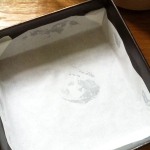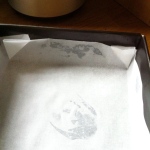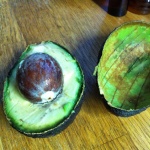This page was first published over a year ago. It has had a many updates since and I will continue to update the page on a regular basis. Many of these things may seem really basic to some of you but may be new for others. I would love to hear your tips so do share via the comment box below.
KITCHEN TIPS
Citrus
- To get more juice out of lime halves that you have started squeezing , dunk them in and out of a bowl of water and give them a final squeeze. This is a trick used in professional kitchens according to Raymond Blanc.
- Heat a whole lemon in the microwave for 30 seconds and it will yield more juice.
- Press down on and roll a lemon or lime back and forth a few times to make it easier to juice.
- Slicing a lemon or lime vertically from stem end to nose also makes it easier to juice.
- Using a wooden reamer is one of the best ways to get the juice out. (thanks to Simon Johnson of Clowne for that tip)

- Rubbing lemon or lime zest between your hands with the sugar required in a sweet recipe will release even more of the aromatic oils. (Dorie Greenspan)
- Use a lemon half, dipped in salt, to deodorise and clean a wooden butchers block type chopping board which has had a good scrub first. Rub all over the board then leave the sticky paste on for an hour or so; wipe down throughly. Before going to bed, coat with olive oil to condition it. The oil will soak in overnight.
Water
- When boiling water in a pan, cover it so that it comes to a boil faster.
- If you need to add ingredients to boiling water, boil water in the kettle, pour into the pan (under which you have turned on the heat obviously!) cover and wait a few seconds for the water to come up to boiling point again. This is quicker than heating water on the hob and uses less energy.
- Water for boiling pasta should be as salty as the sea! Salt raises the boiling point of water and it also seasons the pasta.
- Allow potatoes to come to a boil, using cold water so that they cook evenly all the way through. According to Simon’s mum, anything which as grown below the ground goes into cold water to cook. Anything which has grown above the ground goes into boiling water to cook.
- Weighing liquid like water or milk is more accurate than measuring the volume. So if you need a 100ml of milk or water, pop your container on the scales, reset to zero and weigh out 100g.
Eggs
- Get eggs to room temperature by placing in a bowl/pan and covering the eggs warm TAP water for 5-10 minutes.
- Quickly peel hardboiled eggs by rolling on a hard surface to crack the shell then peeling them under a running tap or in a bowl full of water. The water gets under that membrane which makes it much easier to separate the shell from the cooked egg white.
- When beating egg whites for meringues or soufflés the beaters and the bowl have to be completely grease free. Any hint of grease or egg yolk and the whites will not whip up to the volume required. Many cooks wipe down the bowls and beaters with a paper towel dipped in vinegar if they have any doubts. This is also why it is a good idea to use 3 bowls to separate eggs – one for the yolks, one for the whites and a small one to make the initial separation.
- When folding beaten egg whites into a batter, use a large stainless steel spatula/spoon to do so. A rubber spatula deflates the mixture as it drags through the bubbles whereas the steel glides through preserving the bubbles that you have worked so hard to whip up.
- When folding beaten egg whites into a batter, temper/loosen the batter first by folding in a a quarter of the beaten eggs whites. This makes it easier to incorporate the rest of the whites without knocking out too much of the air.
Butter
- Soften or melt fridge cold butter in short bursts using the defrost mode on the microwave or soften by slicing it thinly and leaving it out for 10 minutes.
- If you need melted butter and you have to pre-heat the oven, pop the butter into a heatproof bowl and place in the oven to melt but remember to check on it. Setting a timer for 2 minutes works to remind me!
- Keep used/empty butter wrappers in the freezer and use to prepare baking tins.
- Unsalted butter goes off faster than salted so stock up when you see it on sale (usually around Christmas and Easter) and freeze it in 50g portions.
Baking
- It is not necessary to grease and paper a tin. You just need to dab in a few places with butter so that the paper will stay put.
- Lining a square or rectangular tin is really easy if you turn it over and drape the paper over it. It is then really easy to make a tidy pleat at the corners (a little like gift wrapping) then slip it off and it will slip neatly, right into the pan.
- For a circular tin, cut out a strip of greaseproof paper which is a little longer than the length of the circumference. Then make a narrow fold along the length of it and snip along it at an angle. Dab a little butter along the sides of the tin and place the strip along it, with the snipped section flat on the base of the tin. Then place a circle of paper on the base, on top of the snipped section.
- Use cocoa powder rather than flour to prepare a tin when making chocolate cake.
- If you are greasing a deep patterned tin, flour it as well so that you can see if you have missed any spots.
- The easiest way to fill a piping bag with icing is to place the piping bag (with the nozzle inserted) inside a tall glass, then peel the over the edges of the glass and fill.

- Place a tea towel under a mixing bowl to keep it in place on the counter as you mix/whip/beat. (Karin Jamotte)
- To make heart shaped cupcakes, place a marble between the liner and the tin before filling with batter.
- There is no need to sift flour and baking powder etc. Place the ingredients in a bowl and whisk well with a hand whisk to aerate and blend. The only time I sift, is when the ingredients like cocoa or icing sugar are lumpy.
Meat and Vegetables
- Always loosely cover and rest roast meat/poultry for 15 – 30 minutes before serving. It will still be hot as well as juicy. This applies to steaks as well.
- Freeze meat and chicken bones (separately) in a large freezer bag. When it is full, you can make a lovely homemade stock for soups, risottos or braises.
- Save parmesan cheese rinds in the freezer. They add a wonderful flavour to minestrone soups and meat sauces. (Thanks to Loretta of Safari of the Mind for the tip on including them in meat sauces.)
- Freeze vegetable trimmings in a large freezer bag. When it is full, make a simple stock.
- I find raw butternut squash really hard to peel and to dice – my hands are small and not that strong. So unless I am braising, or making a risotto, I cut them in half with a big knife, scoop out the seeds with a metal spoon, smear a little olive oil on the cut sides and roast at 180C/350F for 25 mins or half an hour. Then I either scrape the roasted flesh out for dips etc. or slice into wedges and serve with the skins on, telling every one to discard this as they eat. It saves so much time and distress in the kitchen!
- Easily alice off kernels from a cob of corn by placing it upright in the hole of a Bundt pan. The pan will also catch most of the kernels. You could also use an egg cup set on a wad of damp paper towel in a large bowl.

- Wrap celery in foil and store in the fridge to help it stay fresh and last longer.
- Wrapping the tips or crowns of bananas with cling film will keep them from over ripening for an extra 3-5 days. (Thanks to Jhuls of The Not so Creative Cook for tips 7 and 8)
- If you have half an avocado left over, cover it with the shell of the used half and pop it in the fridge – it will stay fresh and green without needing and lemon juice, plastic wrap or magic incantations. The avocado pictured had been in the fridge for 2 days and looks just as fresh as if I had just cut it!
- Don’t store onions and potatoes together – onions give off gases which make the potatoes sprout.
- Sprouted potatoes are ok to eat but cut the sprouts off first as potato sprouts are considered toxic due to their potentially high concentration of glycoalkaloids, which can have an effect on the nervous system.
- Onions and garlic should be stored in a basket on the countertop or open shelf, where air can circulate around them.
- If garlic has sprouted, cutting out the green sprout makes the garlic more digestible.
- Potatoes should be stored in a paper bag in a cool dark cupboard, away from onions.
- Store tomatoes, stem end down if they are off the vine. This stops moisture loss and bacteria entry and extends their shelf life too. Don’t store them in the fridge – the cold turns their starched mealy.
Miscellaneous
- Covering pesto in an opened jar with a thin layer of olive oil stops it from getting mouldy. Useful on any thick paste.
- To soften brown sugar (or keep soft), pop a grape into the canister or bag – it seems to have just the right amount of moisture in it to work. Looks like a raisin after a few months which is when it is time to renew it.
KNIFE WISDOM
- A good knife will last you a lifetime so spend a little money on a good one – you don’t need to spend a fortune and you should try it out to see how it balances in your hand.
- Keep your knife sharp – buy a decent knife sharpener and swipe your blade before you use it. Blunt knives slip because you need to apply more pressure and if the blunt blade cannot get purchase, it will slip and this causes accidents.
- Don’t put your lovely knife in the dishwasher – the powerful detergents blunt the blade and also makes it harder to sharpen.
- Acid also blunts the blade, so if you have sliced tomatoes or lemons, give it a quick rinse.
- A ceramic blade is excellent for cutting tomatoes -there is no transfer of metallic flavour to the tomatoes.
- A ceramic blade will break if you use it to try and cut through bone or hard vegetables like pumpkin or squash.
- Store your knife in a block or on a magnetic wall strip. Keeping it in a drawer with lots of other cutlery dulls the blade and is a little dangerous.
- Clean your knife before putting it back in a wooden block. It is nigh on impossible to clean a wooden block after it has had a greasy, dirty knife inserted in it.
- After you have chopped your ingredients, turn your knife over and use the non-sharp end to scrape the food into the pan.
- Wooden chopping boards are kindest to knives. Plastic too. Don’t use anything really hard to chop on, like glass, tiles or steel as this will blunt the blade.










Selma, one of my favourite tips is to put a damp cloth under the bowl in which you are whipping up egg whites or mayonnaise or any other stuff that needs whipping. It will prevent the bowl from travelling.
LikeLike
Brilliant tip! I knew I could count on you to weigh in Karin! This also works for warped but serviceable chopping boards…
LikeLike
Am making banana bread with the kids this morning & have already used two of these tips (defrost cycle for softening butter & freezing a finished butter wrapper). Brilliant! x
LikeLike
Love banana bread! I usually have a few ghoulish looking bananas in the freezer awaiting their destiny but I seem to have used up the last lot in muffins. So glad the tips were useful Sarah x
LikeLike
Pingback: Bread Angel – Nina Oortman | Selma's Table
Pingback: Cardamom & Orange Syrup Loaf Cake | Selma's Table
Pingback: Almondines | Selma's Table
Pingback: Iced Lemon Squares | Selma's Table
Pingback: Ugly Duckling Carrot and Oatmeal Cake | Selma's Table
Selma, you are so full of great tips – thank you for all your inspiration!
Emma :-)
LikeLike
Emma – thank you! I love passing on things that make cooking and baking more pleasurable and easier too….
LikeLike
Selma, I’ve been following up the advice you gave me earlier – looking for a good light kit, as I’m often not actually around in day light (!) Please, do you have any recommendations that i could easily buy in the UK – I so admire your work.
Thanks again – best wishes,
Emma x.
LikeLike
I’ve been keeping an eye out for lighting but it’s a bit of a minefield. Have a look at this link – the lightbox she uses is perfect because it is small and portable – I just haven’t been able to track one down. This is such a good post by the way – enjoy! …http://pinchofyum.com/artificial-lighting-tips-for-food-photography
LikeLike
Thanks, Slema – will do!
Best wishes, Ex.
LikeLike
Pingback: Caesar Dressing | Selma's Table
Pingback: Ginger Berry Nutty Crisp | Selma's Table
Pingback: Peach & Amaretti Crisp | Selma's Table
Pingback: Plum and Cinnamon Cake | Selma's Table
Pingback: Splendidly Chocolate! | Safari of the Mind
Pingback: Carrot & Apple Cake Cheesecake | Selma's Table
Pingback: Kitchen Tips and Tricks plus Knife Wisdom | Selma's Table
Some wonderful tips Selma, love the grape in the brown sugar… must try :) If you want soft butter fast, use a vegetable peeler to shave the butter with.
LikeLiked by 1 person
Oooh, Moya, that is a good one – I will add this one to the butter section – thanks!!
LikeLiked by 1 person
Two thoughts (not really tips) one from me and one from my late mother. Mine. I agree with and use all your citrus tips. The one I’d add is that I would always use a wooden reamer. On water; my mother always stuck by the rule that vegetables that grow below ground go into cold water and are brought to the boil. Vegatables that grow above the ground go into boiling water (or, as with cabbage, have boiling water added).
I think this is a wonderful list; a list that shows deep knowledge of cooking.
Oh, and don’t put bananas in the fruit bowl!
LikeLiked by 2 people
Those are brilliant Simon – will include. Your mum was a very cleaver woman. Funny, I was going to include my photo of squeezed out limes with a reamer and forgot!! Will include that too!!
LikeLike
Fabulous!! So useful :)
One tip I was told by an Indian lady was to store fresh coriander, keep it in a sealed plastic bag in the fridge.
I put my fresh parsley in a vase of water as soon as I get and it keeps for days.
xx
LikeLiked by 1 person
“Keep your knife sharp….. Blunt knives slip because you need to apply more pressure and if the blunt blade cannot get purchase, it will slip and this causes accidents.” Same advice applies to scalpels. (I had to say it.) love the advice Selma. Thanks, Tracey
LikeLiked by 1 person
A mix of things I already knew and those that I did not. Thanks, Selma.
LikeLiked by 1 person
Wooohooo!! These are so helpful, Selma. <3 Thanks for sharing!! xx
LikeLiked by 1 person
Jhuls, thanks for sharing the page on your FaceBook Page xx
LikeLike
It’s my pleasure, Selma. <3
LikeLiked by 1 person
Wow! So much I didn’t know. Thanks of sharing Selma. I love learning new ways of doing things. I especially, liked the tip on cutting the corn kernels in a bundt pan. I’m off to the grocery store to get me some corn so I can try your trick :)
LikeLiked by 1 person
That’s such a thorough list. I always clean my chopping board that way and I always roll my limes to help get the juice out of them. That’s a great tip about how to fill a piping bag – I’ll remember that xx
LikeLiked by 1 person
A very useful page! :)
LikeLiked by 1 person
Pingback: Tricky Tuesday: Selma’s Tips & Tricks | thenotsocreativecook
Pingback: Sour Cherry, Coconut and Oat Slice | Selma's Table
Pingback: Colour and flavour fills my lunches… | foodbod
Pingback: Maple Walnut Granola- a Tribute to Selma (Fiesta Friday #77) | EATING WELL DIARY